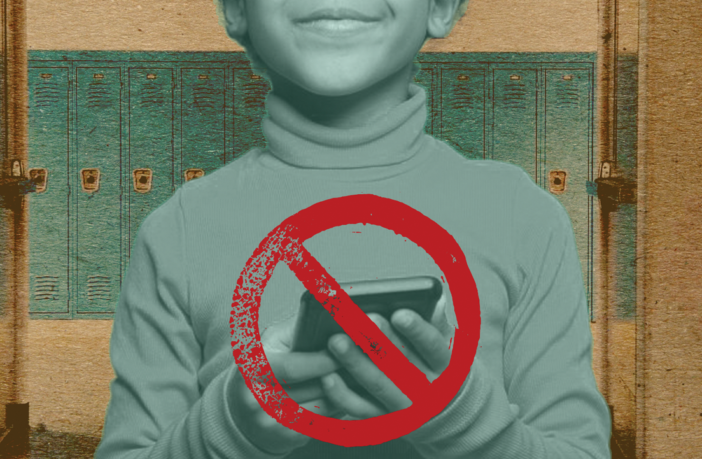Last Updated on August 27, 2024 by BVN
Overview: California Governor Gavin Newsom has urged school districts to restrict students’ use of smartphones on campus immediately, citing research that excessive smartphone use among youth is linked to increased anxiety, depression, and other mental health issues. The move is part of a national trend, with several states and countries implementing cell phone bans in schools to reduce distractions and improve test scores. However, some argue against banning cell phones in classrooms due to concerns about accessibility in case of emergencies.
S.E. Williams
Today, cell phones have almost become an additional appendage. We carry them around as if they are as sacred as an arm or a leg. We’d be lost without them and our children are the same.
If at some level, this did not sit quite right with you, maybe the ancestors are trying to tell you something and now, so is our governor.
California Gov. Gavin Newsom sent letters to school district officials recently, urging them to restrict students’ use of smartphones on campus beginning immediately.
California is not unique in this regard. It is among the cadre of states around the nation–both red and blue–scrambling to take action as everyone struggles to digest data showing the concerning reality that “excessive smartphone use among youth is linked to increased anxiety, depression, and other mental health issues.” Newsom stressed in his letter.
“Reducing phone use in class leads to improved concentration, better academic outcomes, and enhanced social interactions.”
California Governor Gavin Newsom
He also reference a PEW Survey that found “72% of high school and 33% of middle school teachers report cell phone distractions as a major problem”. Newsom also pointed to a report by Common Sense Media that found “97% of students use their phones during the school day for a median of 43 minutes.”
The governor went on to stress how when you combine all of this information, with the U.S. Surgeon General’s warning about the risks of social media, “it is urgent to provide reasonable guardrails for smartphone use in schools,” he argued.
Although many still disagree with this policy the proof is in the “pudding” so to speak. According to the governor, schools that have already implemented policies have shown improvement in test scores and reduced bullying.
In the meantime, what has taken California and America so long to address this issue, especially when we’ve known since before COVID that our children were suffering.
In 2019, the CDC reported that among high school youth between the ages of 14 and 18 years, there were 2,039 suicides nationwide. Suicide was the reason for about 33.9% or nearly one of every three injury-related deaths among this age group. Between 2009 and 2018, the suicide rates in this same age group increased by a shocking 61.7% from 6.0 to 9.7 per 100,000.
In addition, between 2008 to 2020, the National Center for Biotechnology Information reported the rate of death by suicide increased for youth between the ages of 12-17 by a shocking 70.3% from 3.7 to 6.3 per 100,000 population.-–another red flag that something was wrong. And then, of course, came COVID-19.
The questions I keep asking myself are: If the data shows it’s bad for the children and if we continue to watch the suicide rates among youth increase, why is it taking us so long here in America to take the legislative action necessary to make this a requirement to protect the children? Other countries are way ahead of us on this issue. A number of them have already taken action, banning cellphones in school classrooms, with France leading the way as far back as 2018. Other countries with bans include England, Finland, Israel, Australia, Ontario, Greece, Ghana, Rwanda, and Uganda, Russia, Sweden, China, Italy, Netherlands, and the United Kingdom.
Here in the U.S. states are now taking action to restrict cell phone use as well. Red state Florida was first to implement such a ban last year. While here in California, many school districts up and down the state were moving forward on their own, implementing cell phone policies for their school districts while well intentioned state laws intended to establish mandatory requirements are still working their way through the legislature. Meanwhile, it appears San Bernardino Unified School District has had classroom phone policies for years according to a recent report.
The movement here is California is all possible thanks to AB 272 signed into law by Newsom in 2019. The bill authorized school districts to regulate the use of smartphones during school hours. The bill gave authorization—but not a mandate.
Of course, it would not be America if there were not many on the other side with a different perspective. They argue against banning cell phones in classrooms, for some important reasons. Some merely because they want to be able to reach their children at all times. Still others cite the nation’s shameful history of mass school shootings. They want their child(ren) to have access to a cell phone at all times in case of an emergency.
I certainly understand concerns on both sides of this issue. However, a 2023 report by Education Weekly, noted that about 97% of students of all students use their phone at school. The median usage is 43 minutes–about the length of an average class period. And Education Weekly reported last year that one in five students, fully 20%, receive more than 500 notifications a day.
Nearly all students—97 percent—use their phones at some point during the school day, for a median of 43 minutes, the study found, or about the length of a full class period in many schools.
For us as a state, as a nation to be running behind most developed nations on this is unconscionable especially since we’ve known for years we were heading for a crisis. We need to master technology and not let technology master us and what is best for our children.
Of course, this is just my opinion. I’m keeping it real.



